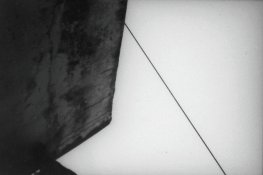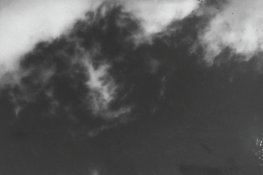rknewcomb
Subscriber
Why is it that shooting paper negatives is so addictive? Is it the particular image qualities, the cameras that you use for it, the process??
thanks
Robert
thanks
Robert
Last edited:
 . so its speed
. so its speed



Every built-in lightmeter will react diferently to the paper's sensitivity. My Pentax says that my paper is 32 1/3 ASA, and I'm pretty happy with it.
I just guess what the ISO/ASA could be and take a test photograph in bright daylight, which is the best light for paper negatives. Then I process the negative and judge if it is over or underexposed, and if so I adjust the ASA setting in the camera accordingly until I get consistent exposures. It's basically trial and error.Do you mind explaining your process for determining paper speed?
You're right. It's quite high, and quite useful too... I use Kentmere VC select variable contrast RC paper, which I didn't know when I got it but it has quite an amount of tricks to get high sensitivity. Because it is variable contrast, it is not just sensitive to blue light, though the colors do render like in classic blue sensitive emulsions. It also has developer added into the emulsion, which kicks the ASA higher. So yeah, pretty good deal. Kentmere is a second brand from Ilford. Same stuff, lower price.That's a whole lot more usable speed than what one gets with the venerable Adox CMS 20ii film!! Which paper do you use?
Do you mind explaining your process for determining paper speed?
Hi Raghu
I don't mean to speak for Máx in any way shape or form but .. it is next to impossible to determine the ISO of photo paper unless it is done using an enlarger bulb or similar type of light source rich in blue light and that is the understanding much like film ISO is determined in a lab under specific conditions and it is just a framework for the rest of us to work with. I remember a conversation I had with the guy who founded Rockland Colloid and he used the expression "variable ISO" to describe how paper or liquid emulsion ( that is not pan chromatic ) operates. and for me .. that is what makes it so much fun, you have to really be connected with your environment ... flash or enlarger is 1 thing, UV light bank is another, natural light something else, different time of year something else, none of it relates but it all relates at the same time. open shade one day is not the same as open shade a few weeks or a month later.. and once you crack the code there is nothing like it...

Paper has 2 kinds of reciprocity failure, speed and contrast.
In speed reciprocity failure, the paper loses speed with exposures much above about 1 minute and it gains speed below about 1 second.
In contrast reciprocity failure, contrast goes down with longer exposure and up with shorter exposure.
These effects vary vastly among papers, but can be disastrous with VC papers where you are trying to design matched reciprocity failure between 2 emulsions.
Add reciprocity failure and it becomes very complicated!
It looks like people who're getting good speed from paper are using it at the fast speed reciprocity failure region.

earlier today I wanted to take a skyscape, and I had to estimate again the ASA, which ended up being 200 1/3 for a sky very bright and full of blue and UV light.
 Can you post some examples of your work at this speed?
Can you post some examples of your work at this speed?

Yesterday we had very beautiful clouds, so you're in luck!
View attachment 284918 View attachment 284919
You can tell I don't have burnt blacks not completely white areas, I'm very happy with the exposure...
To explain a little bit,
it's the fun with the process for me!Why is it that shooting paper negatives is so addictive? Is it the particular image qualities, the cameras that you use for it, the process??
thanks
Robert
Hell yes!(...) and can process under a safelight!

| Photrio.com contains affiliate links to products. We may receive a commission for purchases made through these links. To read our full affiliate disclosure statement please click Here. |
PHOTRIO PARTNERS EQUALLY FUNDING OUR COMMUNITY:  |